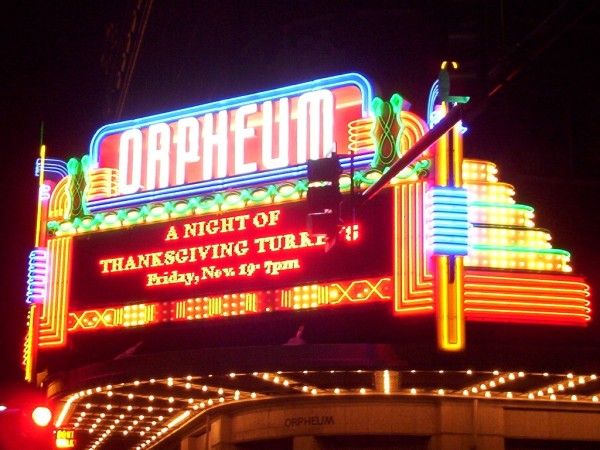Cities: April 2006 Archives
I originally posted part of this as a comment on Catholic Ragemonkey in response to Fr. Shane Tharp's mentioning that he's in Wichita:
Wichita is a nice place to visit. I took several business trips there in the not-too-distant past, and I always found time to get out and explore a bit.
If you're much of a meat-eater, Wichita has a great barbecue buffet in the most unlikely place. It's called B&C Creations. The front part sells antiques, gift, and art; the buffet (lunch only) is in the back. You pay a laughably low price and get all you can eat of the some of the best smoked ribs and pulled pork you'll ever have. They have garlic coleslaw, too, which is amazingly good. It's on the eastern edge of Old Town, 355 N. Washington.
Watermark Books on East Douglas is an independent bookseller with a cafe and free WiFi. Exploration Place, the science museum across the river from downtown, is a lot of fun, and you're just an hour away from the second-biggest collection of spacecraft in the world -- the Cosmosphere in Hutchinson.

I neglected to mention the Orpheum Theatre, a classic downtown movie palace which is under restoration. I went there to see Reefer Madness, Plan 9 from Outer Space, and The Terror of Tiny Town during one of my trips. I even got a tour of the projection booth.
Wichita is a nicer place to visit than you might think. The key is to get away from the main highways. Driving the length of Douglas east to west is a good way to see the most interesting parts of town, including downtown, which hasn't been as devastated by parking lots and urban renewal as Tulsa's downtown has, and the old village of Delano, just west of the river.
To city officials who say that eminent domain is the only way to revitalize cities, look at Anaheim, California:
Anaheim's old downtown was obliterated in the 1970s through past uses of eminent domain and urban renewal. Now, the city (population: 328,000) wants to build a new downtown, and the target location is called the Platinum Triangle, an area of one-story warehouses near Angel Stadium.
Sounds a lot like Tulsa. Our Main Street is all but gone, as is the old Black Wall Street, thanks to urban renewal, so we're looking for substitutes, areas that were left unscathed by urban renewal. Because we destroyed most of our downtown commercial and residential buildings, we're looking to repurpose office and warehouse buildings to create a downtown commercial/residential core where it had never existed before.
In the typical world of redevelopment, officials would choose a plan and a developer, offer subsidies and exclusive development rights, and exert pressure on existing property owners to leave the area.
That is a pretty good description of the approach Tulsa tried to take with the "East Village," the 115 acres bounded by Elgin, the Frisco tracks, the east leg of the Inner Dispersal Loop, and 7th St. Proposals were solicited, and a St. Louis big-box shopping center developer called Desco was given exclusive rights to develop the area, with the city's power of eminent domain as a resource available for assembling property for the private developer. Desco wasn't able to get anything going and their rights lapsed. In the meantime, small property owners had lived in fear of losing their property and weren't inclined to invest in improvements.
Instead, Anaheim created a land-value premium by creating an overlay zone that allowed almost any imaginable use of property. Because current owners could now sell to a wider range of buyers, the Platinum Triangle is booming, with billions in private investment, millions of square feet of office, restaurant and retail space, and more than a dozen new high-rises in the works.
Tulsa's CBD zoning district offers that kind of freedom, and it applies to most land within the Inner Dispersal Loop, although some of that land is in one of the industrial districts (IL, IM, or IH), which restricts less intensive uses. I think this might be the case in party of the East Village and Brady Village. In practical terms, industrial zoning puts hurdles in the way of retail or residential uses.
Anaheim's example deserves closer examination.
(Hat tip to U. S. Rep. John Doolittle's Morning Murmur.)